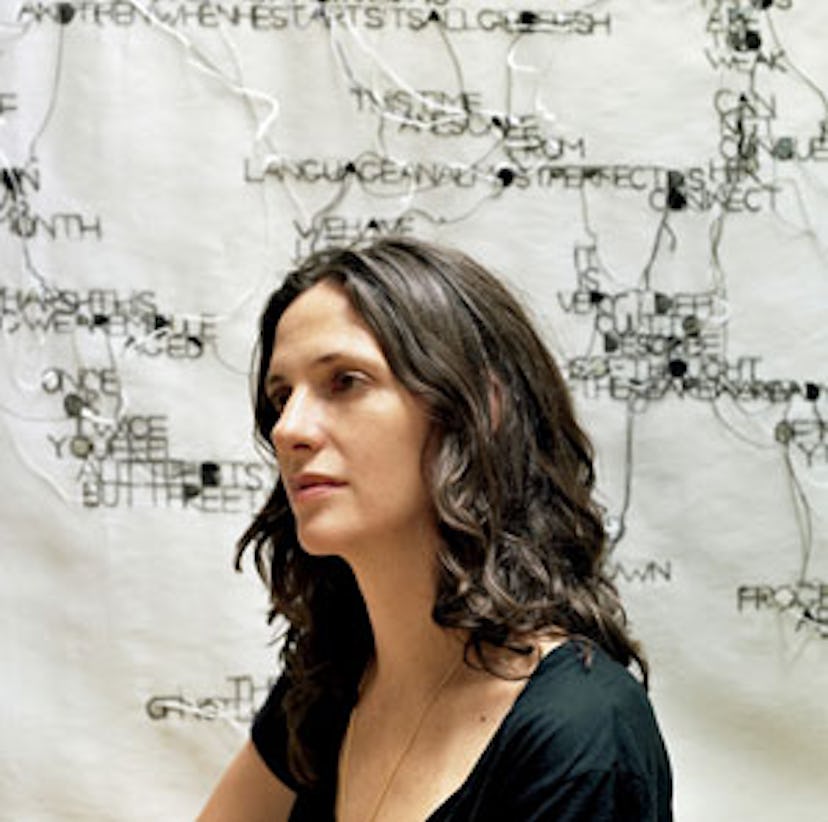Young Artists: Jessica Rankin
With buzz behind them and talent to spare, these six up-and-comers may be the art world's next big names.

Jessica Rankin recently spent 18 months living in Berlin, an experience that brought home a reality she has long explored in her work: the limitations of language. Even in her native tongue, the Australian-born New Yorker sometimes feels like a foreigner. “I have a very ambivalent feeling about language,” says the soft-spoken artist, recalling how, after her mother died of breast cancer when Rankin was nine, she consoled herself by reading. “On the one hand, it’s a refuge, and on the other hand, I resent it and I’m very comfortable shutting down and not wanting to communicate very much.”
How Rankin, 38, best communicates is by investigating memory and consciousness through the words, images and celestial maps she embroiders onto panels of diaphanous organdy or draws and paints on paper. A piece near the door of her home in New York’s Harlem neighborhood, which she shares with her partner, artist Julie Mehretu, and their four-year-old son, Cade, makes the point. On a rectangle of pale gray organdy, Rankin has sewn black and silver blocks of text taken from her writings and from a Babylonian creation myth. “My son, my son, son of the sun, and heaven’s son,” it reads. But she has obscured certain letters with loops of thread and connected seemingly random words. “This idea of legibility and illegibility is important to me,” says Rankin, who has had shows at White Cube in London and P.S. 1 in New York. “I feel like [words] can often be so misleading.”
It was in art school at Rutgers University that Rankin, the daughter of acclaimed Australian painter David Rankin, found her voice through needle and thread. Initially, reappropriating needlework—often denigrated as a women’s pursuit—attracted her somewhat, although she insists her work is more conceptual than practical. “Certainly there’s a craft to it, but the things I’m thinking about are 95 percent to do with philosophy and language,” she says.
For the show “Landscapes of the Mind: Contemporary Artists Contemplate the Brain,” opening in January at the Williams College Museum of Art, Rankin has been looking at images of the brain. Psychology and neuroscience professor Betty Zimmerberg, who is cocurating the show, was struck by the parallels between Rankin’s pieces and the mind’s dream states. “When you’re dreaming, the front part of the brain weaves a story out of random words and images—it’s like what Jessica’s doing,” she says. To Amy Cappellazzo, Christie’s international cohead of postwar and contemporary art, Rankin’s “genuine,” nonconfrontational art is refreshing. “We live in such a cynical world,” says Cappellazzo. “It’s brave to want to be poetic right now.”